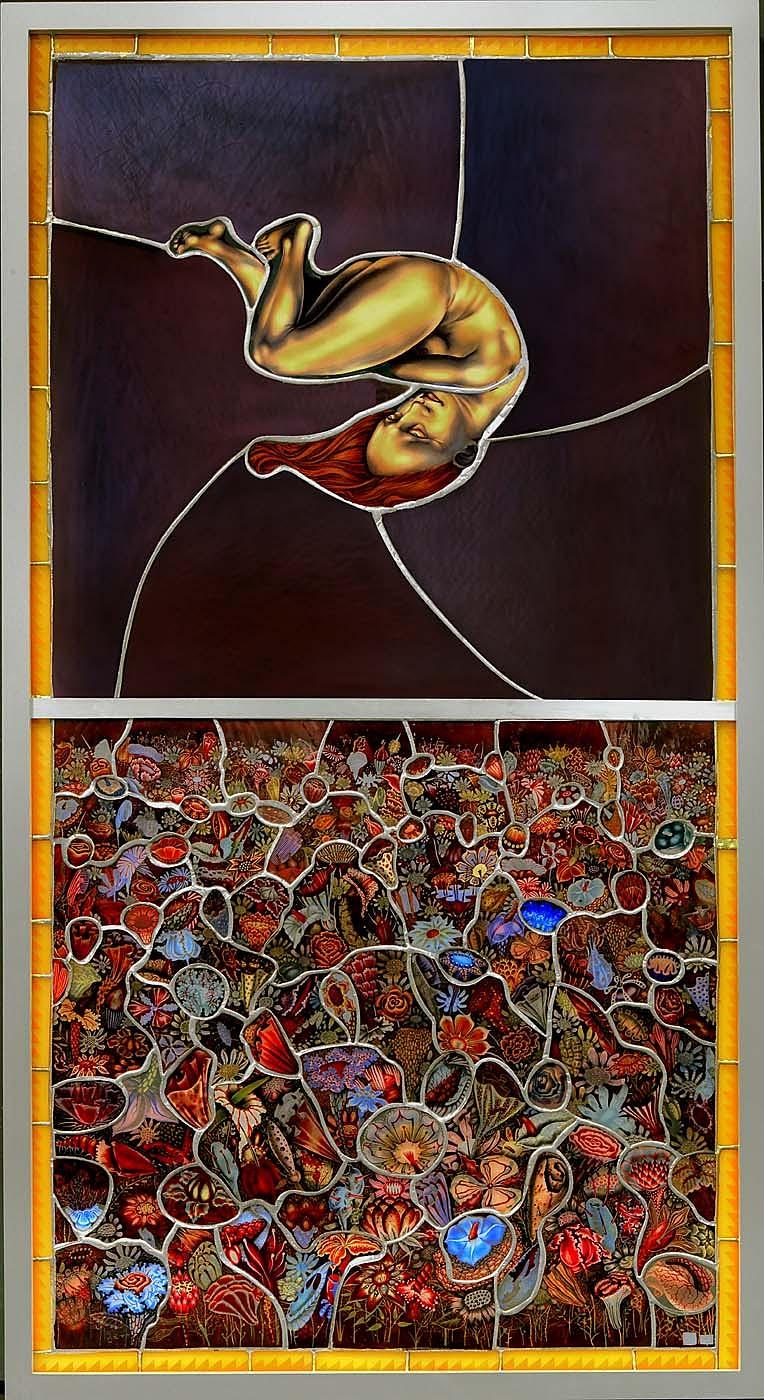Nora Atkinson, the Lloyd Herman Curator of Craft, joined American Art's Renwick Gallery staff earlier this year. She talked with Eye Level about the museum's recent acquisition The Birth of Eve by Judith Schaechter, which joins her 1990 work A Little Torcher also in the museum's permanent collection.
For more than 30 years, the labor-intensive medium of stained glass has been Judith Schaechter's singular obsession, and today she is recognized not only as one of the foremost innovators, teachers, and practitioners in her field, but also one of an elite few glass artists to have gained critical attention from both the world of craft and the overlapping sphere of fine art.
Following a two-year long installation from 2010-2012 at Eastern State Penitentiary, a former prison turned art space, The Birth of Eve marks Schaechter's return to the meticulous decorative style which has become her hallmark. Her technical skill is evident in the sea of flowers covering the lower panel, constructed of up to five layers of cut, sandblasted, and enameled glass, stacked to produce variations of pattern, color, and depth. Schaechter balances this dizzying vision of "Eden" with the calm of the void above, from which Eve tumbles, her face in a delicately-etched pensive expression. This piece, a notable departure from secular themes, will open up a new direction in her work. Schaechter has referred to this recent work as a "masterpiece" of her art.
Initially a painter, Schaechter discovered stained glass in the early 1980s and immediately connected it with her illustrative graphic renderings, influenced by sources such as underground comics, Japanese woodblock prints, punk subculture, medieval tapestries, and popular media. Her work since has focused on the tension between disturbing, psychologically-charged narratives and the historical tradition of stained glass, with its attendant associations of literal and metaphorical themes. Known for her desperate, sad-eyed figures, cast in macabre scenes that evoke the tortured saints of Gothic cathedral windows, Schaechter plays the dark tone of her imagery against the beauty and light of her medium. By drawing parallels between the modern and the medieval, her works confront contemporary fears and anxieties, yet read as timeless meditations on suffering and transcendence.
Schaechter's work can also be found in various collections including The Metropolitan Museum of Art and the Victoria and Albert Museum. She has been featured in numerous exhibitions, including the 2011 Venice Biennale, the 2011 Renwick Craft Invitational, the 2002 Whitney Biennial, and the Renwick Gallery's 1990 exhibition, GlassWorks, from which the museum acquired its initial example of her work. We are proud to add The Birth of Eve to American Art's permanent collection.



















